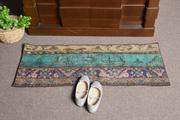Turkish Kilim Pillow, Kilim Cushion Sham, Outdoor Patio Pillow Case, Antique Pillows, Aesthetic Pillow Cover, 16"x16" Beige Pillow Cover
Office Chair Pillow, Kilim Pillow Cover, Home Decor Pillow, Turkish Kilim Pillow, Outdoor Throw Pillow, 16"x16" Blue Cushion Case
16"x16" Beige Cushion Case, Southwestern Pillow Sham, Kilim Pillow Cover, Turkish Pillow, Handmade Rug Seat Pillow Case, Vintage Pillow
Antique Pillows, Handmade Kilim Cushion, 16"x16" Blue Pillow Sham, Vintage Pillow Cover, Kilim Pillow Cover
Turkish Pillow, 16"x16" Green Pillow Cover, Christmas Cushion Case, Crochet Pattern Pillow Cover, Vintage Kilim Throw Pillow, Gift Pillow
Throw Kilim Pillow, Boho Pillow, One Of A Kind Cushion, Outdoor Throw Pillow Case, 16"x16" Beige Pillow Case, Gift Pillow
Decorative Throw Cushion Case, Boho Pillow, Vintage Kilim Throw Pillow, Interior Designer Pillow, 16"x16" Beige Pillow Case
Sofa Bolster Pillow Sham, Boho Pillow, Pillow for Couch, Living Room Throw Cushion, 16"x16" Beige Pillow, Turkish Kilim Pillow
Crochet Pattern Cushion, Bolster Pillow Case, 16"x16" Red Pillow Case, Kilim Pillow Cover, Kilim Pillow, Home Decor Pillow
16"x16" Blue Pillow Sham, Kilim Pillow, Decorative Pillow Case, Patio Pillow Sham, Kilim Cushion Sham, Boho Pillow Sham Cover
Meditation Pillow, Vintage Kilim Pillow, 16"x16" Beige Pillow Case, Handmade Kilim Cushion, Floor Cushion, Home Decor Pillow
Handmade Throw Pillow Sham, Pillow for Sofa, Ethnical Kilim Rug Pillow, Handmade Kilim Cushion, 16"x16" Red Pillow Case
Throw Kilim Pillow, Bohemian Cushion Cushion Case, Turkish Kilim Pillow, Gift Pillow, Colorful Cushion, 16"x16" Blue Pillow Cover
Boho Throw Cushion Case, Vintage Pillow, Handmade Kilim Cushion, 16"x16" Beige Pillow Cover, Vintage Kilim Throw Pillow, Muted Pillow Case
Turkish Bench Pillow, Pillow for Couch, Gift Pillow, Tribal Pillow Cover, 16"x16" Blue Pillow Sham, Vintage Kilim Pillow
Turkish Pillow, Turkish Kilim Pillow, 16"x16" Yellow Cushion Cover, Kilim Pillow, Rustic Cushion Cover, Outdoor Throw Pillow Cover
Kilim Cushion Sham, 16"x16" Blue Pillow Sham, Antique Pillows, Personalized Gift Pillow Pillow Case, Vintage Kilim Throw Pillow
Boho Pillow Sham Cover, Antique Pillows, Turkish Bench Cushion Cover, 16"x16" Beige Cushion, Ethnical Kilim Rug Pillow
Kilim Pillow, Handmade Rug Seat Pillow Cover, 16"x16" Orange Cushion Cover, Gift Pillow, Vintage Kilim Throw Pillow
Neutral Pillow Cover, Kilim Cushion Sham, Interior Designer Pillow, Wholesale Pillow, Boho Pillow Sham Cover, 16"x16" Green Cushion Cover
In the world of interior design, the allure of Oriental rugs has remained timeless. These intricate and beautiful textiles, once referred to broadly as "Oriental rug," carry with them stories of ancient civilizations, skilled craftsmanship, and a rich cultural heritage. As the global appreciation for these rugs has evolved, so too have the names we use to describe them. Today, each rug is often recognized by its region of origin, weaving techniques, and unique patterns. Join us as we unravel the mystique and explore the modern names of what were traditionally known as Oriental rugs.
Oriental rug have historically encompassed a wide variety of rugs from regions stretching across Asia, including Persia (Iran), Turkey, China, India, and the Caucasus. These rugs are distinguished by their intricate designs, high-quality materials, and the traditional techniques used to create them. As the appreciation for these rugs has grown, so has the desire to more accurately describe and categorize them, leading to a more region-specific nomenclature.
Modern Names of Traditional Oriental Rugs
Let’s delve into the modern names of these exquisite rugs, each reflecting its unique origin and characteristics:
1. Persian Rugs
Persian rugs are perhaps the most renowned and sought-after. Originating from Iran, these rugs are celebrated for their intricate patterns, luxurious materials, and rich color palettes. Often featuring floral designs, medallions, and detailed borders, Persian rugs are known for their high knot density and superior craftsmanship.
2. Turkish Rugs
Turkey has a long-standing tradition of rug weaving, particularly in regions like Anatolia and Hereke. Turkish rugs often use the symmetrical Turkish (Ghiordes) knot and feature geometric patterns, bold colors, and symbols such as stars and medallions.
3. Caucasian Rugs
Rugs from the Caucasus region, between the Black Sea and the Caspian Sea, are distinctive for their vibrant colors and bold, geometric patterns. These rugs typically include motifs such as crosses, stars, and stylized animals, woven with a coarse, robust texture.
4. Kashmir Rugs
Originating from the Kashmir region of India and Pakistan, these rugs are known for their luxurious feel and intricate designs. Often made from silk or a silk-wool blend, Kashmir rugs feature detailed floral patterns and a soft, luminous sheen.
5. Chinese Rugs
Chinese rug weaving has a distinct history and style, with influences from ancient Chinese art and culture. These rugs often feature motifs such as dragons, phoenixes, and floral designs, with a focus on symmetry and precision.
Threads of Excellence: Understanding Turkish Rug Quality
Turkish rugs are not just decorative pieces; they are woven tapestries of history, art, and exceptional craftsmanship. Renowned for their intricate designs, rich colors, and unparalleled quality, Turkish rugs have adorned homes for centuries, adding warmth and character to any space. But what sets a high-quality Turkish rug apart from the rest? Join us as we unravel the secrets behind the impeccable craftsmanship and enduring beauty of Turkish rugs.
Turkish rugs, also known as Anatolian rugs, are celebrated for their durability, intricate patterns, and luxurious materials. The quality of a Turkish rugs are determined by several factors, including the knotting technique, materials used, design complexity, and the artisan's skill. Here’s what makes these rugs truly exceptional:
· Hand-Knotted Excellence: The cornerstone of Turkish rug quality is the traditional hand-knotting technique, which requires immense skill and patience.
· Premium Materials: High-quality Turkish rugs are crafted from natural fibers like wool, cotton, and silk, chosen for their durability and aesthetic appeal.
· Intricate Designs: The patterns and motifs, often symbolic and passed down through generations, reflect the rich cultural heritage of the region.
· Artisan Skill: The experience and expertise of the weaver play a crucial role in the rug's overall quality, with master weavers producing the most coveted pieces. You can buy the best products from Kayrarug.
